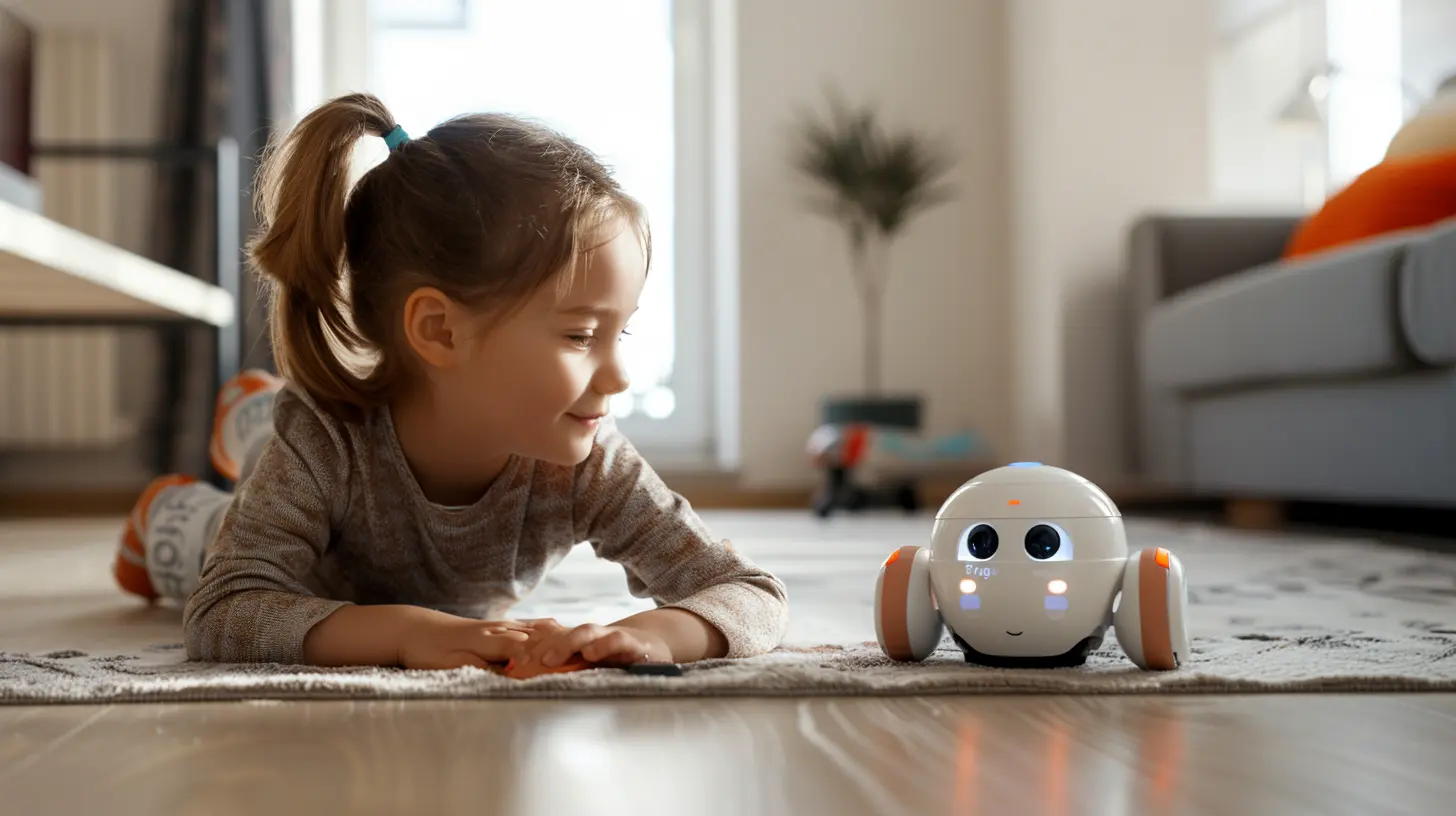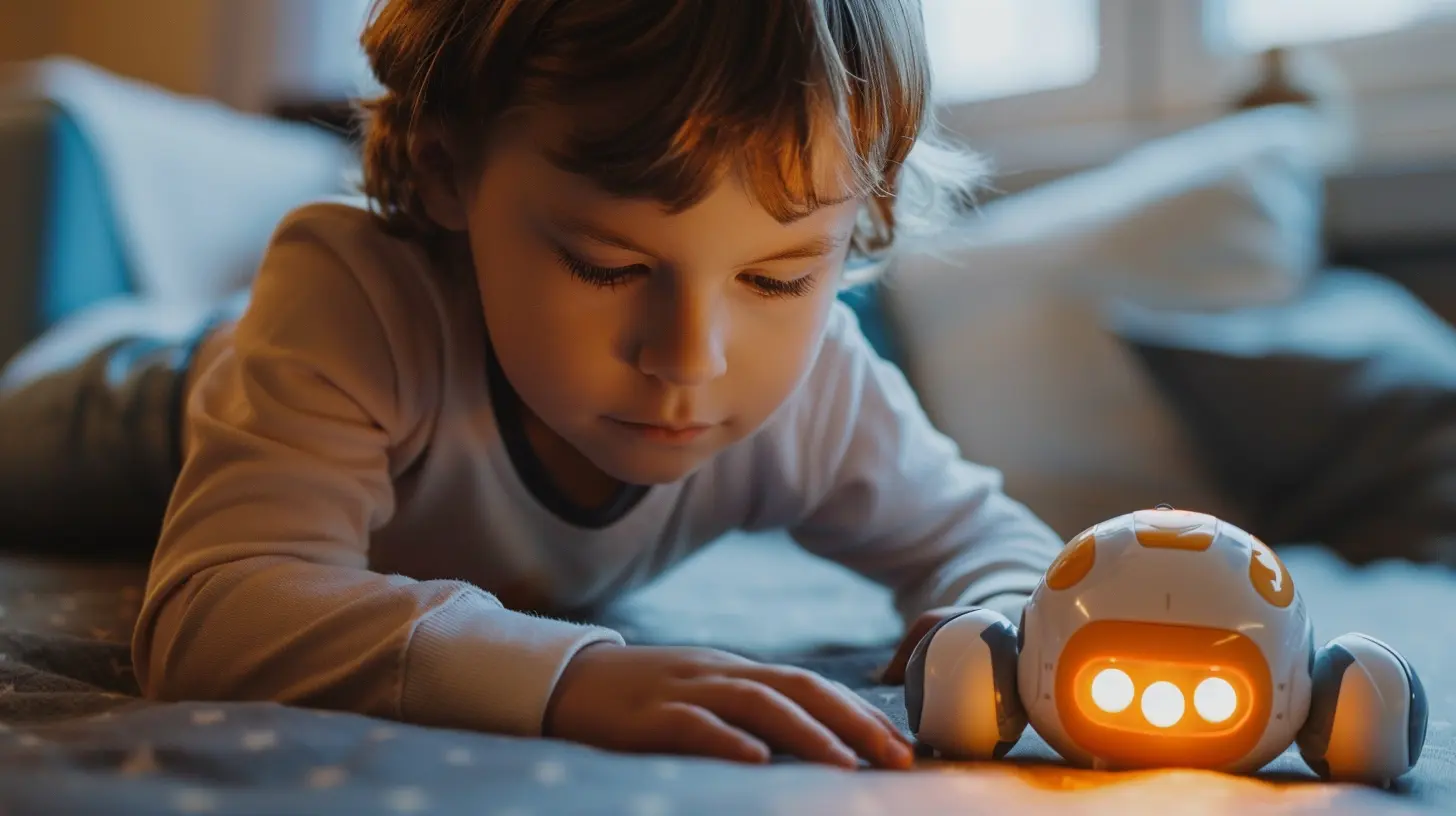The Pros and Cons of Smart Toys for Kids
25 September 2025
Let’s be real—parenting in the tech era is like walking a tightrope. One minute you’re marveling at how your child can ask a robot to play Baby Shark, and the next, you’re wondering if that same robot is eavesdropping on your dinner plans. Yep, we're talking about smart toys.
Smart toys—those cool, sensor-packed, voice-activated, app-connected gadgets—are turning playtime into something out of a sci-fi movie. But as impressive as they are, they come with their fair share of red flags. So, before you rush to add that shiny talking teddy bear to your kid’s collection, let’s break this down.
In this article, we’ll dig into the pros and cons of smart toys for kids, the safety issues, the developmental impacts, and how you as a parent can navigate this digital playground without stepping on metaphorical Legos. Let’s dive in!
What Are Smart Toys, Anyway?
Smart toys are kind of like the Siri or Alexa of the toy world. These are interactive playthings powered by artificial intelligence, sensors, machine learning, and internet connectivity. They can respond to voice commands, adapt to your child’s behavior, and even update new features over time via wi-fi or Bluetooth.Think: talking dolls that remember your kid's name, robot dogs that learn tricks, tablets with curated educational games, and coding kits for budding programmers.
These toys are built to be more than just fun—they’re designed to teach, learn, communicate, and grow with your child. Sounds amazing, right? But hold that thought.
✅ The Pros of Smart Toys for Kids
1. Boosting Learning and Development
Let’s start with the good stuff. One of the biggest perks of smart toys is their potential to enhance cognitive development. Many of these toys come with interactive educational games that teach everything from basic math to foreign languages.For example, a smart globe might teach geography through quizzes and storytelling, or a coding robot could help your child grasp early programming concepts. That’s education disguised as fun—kind of like sneaking veggies into mac and cheese.
Key takeaways:
- Promotes problem-solving and critical thinking
- Encourages creativity through interactive play
- Supports STEM learning in a hands-on way
2. Personalized Play Experiences
Unlike traditional toys, smart toys can adapt. They “learn” from your child’s behavior and tailor responses or challenges accordingly. It’s like having a toy that grows with your child’s skills and interests.If your kid’s Bob the Builder today, the toy responds accordingly. Tomorrow, if they’re all about being a pop star, that same toy might start beatboxing. Boom—playtime just got personal.
3. Encouraging Independent Play
Smart toys are often good at holding a child’s attention. They respond, they entertain, and they offer activities that don’t require an adult moderator.This means:
- Your child can engage in meaningful play while you, let’s say, finally finish your coffee
- Reduces screen time if used as an alternative to tablets or TV
Think of smart toys as playtime companions—not babysitters—but still a helping hand for parents juggling a million things at once.
4. Social and Emotional Learning
Some smart toys are designed with emotional intelligence in mind. They can help children identify emotions, practice empathy, and learn social cues. This is especially great for kids who are shy or on the autism spectrum.With regular interaction, kids can learn:
- Turn-taking
- Expressing feelings
- Dealing with frustration appropriately (without a meltdown)
❌ The Cons of Smart Toys for Kids
Alright, now for the flip side. While smart toys can be amazing, they’re not all rainbows and unicorns. There are some serious concerns you need to weigh before stocking your shelves.1. Privacy and Data Collection
This one’s a biggie. Most smart toys are connected to the internet, which means they may collect data—names, voices, locations, and usage patterns. Yikes.You might be thinking: “Why would a toy need all that info?” Good question.
Some companies use this data to improve the toy's functionality. But others may use it for marketing or, worse, store it insecurely—making it vulnerable to hacking.
Here’s what you should ask:
- Does the toy have encryption?
- What data is being collected and why?
- Is there a way to delete personal data?
As a parent, you’ve gotta be your kid’s digital bouncer. Read the privacy policies (yes, the fine print), and don’t be afraid to block a toy that’s too nosy.
2. Over-Reliance on Technology
Smart toys might be cool, but they can’t replace real human interaction. When kids spend too much time playing with AI companions, there’s a risk of them becoming more passive in social settings.Remember, no toy—no matter how “smart”—can replicate the benefits of:
- Face-to-face interaction
- Unstructured, imaginative play
- Outdoor adventures (hello, mud pies and tag!)
Too much tech-based play can make kids reliant on prompts and feedback from the toy instead of using their own creativity or communicating with peers.
3. Limited Imagination
Here’s a weird paradox. Some smart toys are so structured in how they deliver play experiences that they actually stifle creativity.Instead of building an imaginary world with blocks or turning a cardboard box into a spaceship, a smart toy might “talk” your child through an already-designed game. It’s like watching a movie instead of reading a book—you get a complete story, but your imagination doesn’t get much exercise.
4. Cost and Accessibility
Let’s not forget the price tag. Smart toys are usually far more expensive than their non-tech counterparts. And those costs don’t always stop at the checkout counter.Many require:
- Ongoing subscriptions
- Internet connectivity
- App downloads on personal devices
That can make them less accessible for many families, and frustrating for parents who don't want to deal with constant updates or in-app purchases.
Smart Toy Safety Tips for Parents
Thinking of giving smart toys a try? Here are some kid-tested, parent-approved tips to keep things safe and fun:Do Your Homework
Before buying, check reviews, manufacturer info, and whether the toy meets safety standards.Read Privacy Policies
We know it’s boring, but it’s critical. Make sure you understand what data is collected and how it's used.Use Parental Controls
Most smart toys come with companion apps. Use them to limit usage, block inappropriate content, or mute microphones when not in use.Keep Software Updated
Like any device, smart toys can have vulnerabilities. Regularly updating firmware helps protect against security flaws.Encourage Balance
Smart toys are great, but mix them with traditional toys, books, and outdoor play for a balanced play diet.Are Smart Toys Worth It?
That really depends on your child’s needs and how you use the toy. Used wisely, smart toys can be a powerful tool in your parenting toolkit. They’re interactive, educational, and often super fun. But used excessively—or without proper safeguards—they also pose risks, from privacy concerns to stunting creativity.Think of smart toys like dessert. A sweet treat now and then? Awesome! Making it the main course? Not so much.
The magic happens where smart tech meets smart parenting.
Final Thoughts
Smart toys are here to stay—and they're only getting smarter. As a parent, your job is to stay one step ahead (or at least keep up). That means asking questions, setting boundaries, and staying engaged with how your child plays and learns.So, whether you’re buying a robot puppy, a talking dinosaur, or a tablet that turns your toddler into a math whiz, remember—you're the one who makes the toy truly smart.
Because at the end of the day, no gadget can replace the love, attention, and good old-fashioned storytelling of a parent.
all images in this post were generated using AI tools
Category:
Tech And KidsAuthor:

Noah Sawyer
Discussion
rate this article
1 comments
Felix Ellison
Smart toys ignite creativity and learning, but balance is key to ensure kids thrive offline too!
October 4, 2025 at 3:23 PM

Noah Sawyer
Absolutely! Striking a balance between smart play and offline activities is essential for holistic child development.


